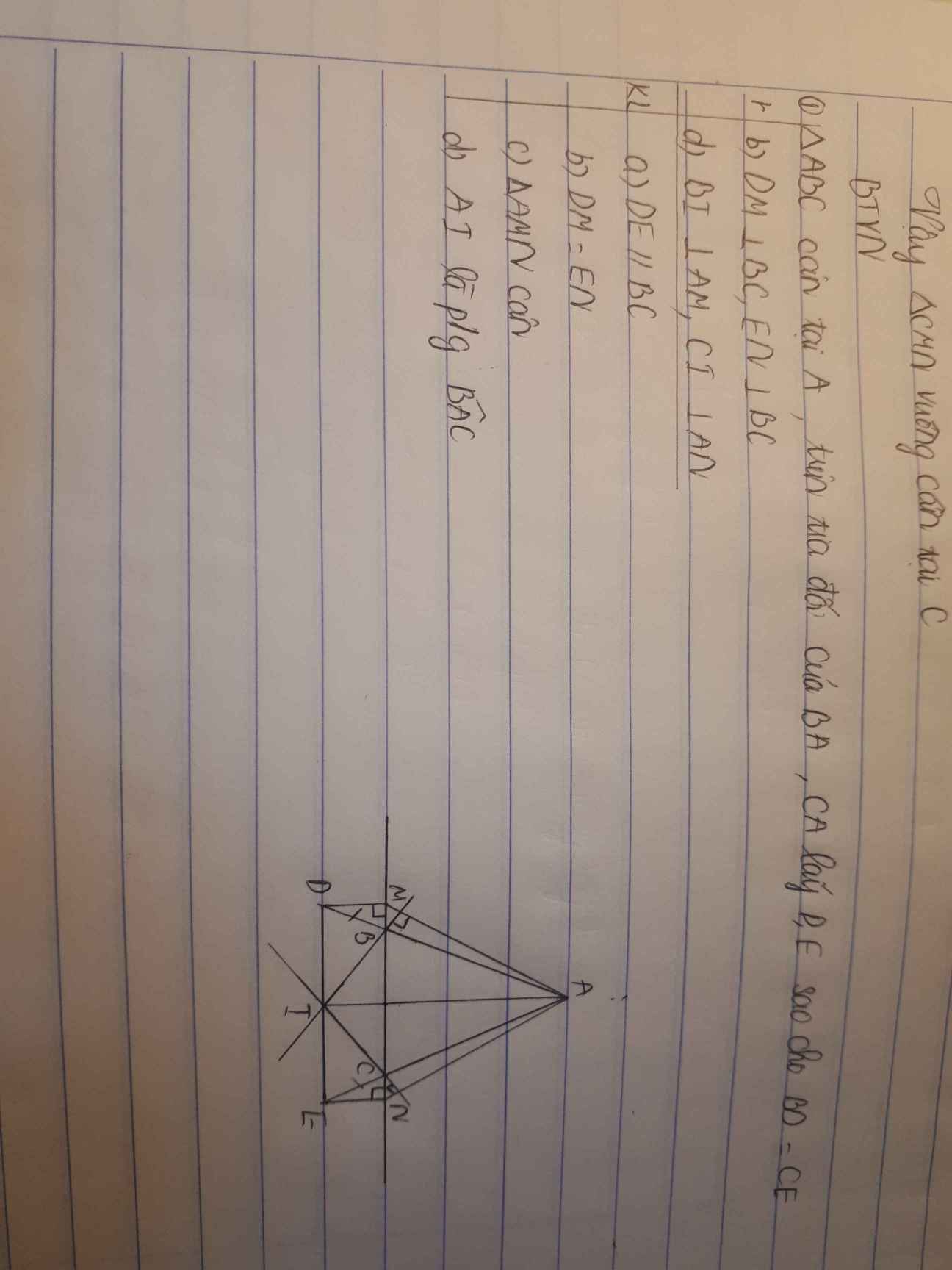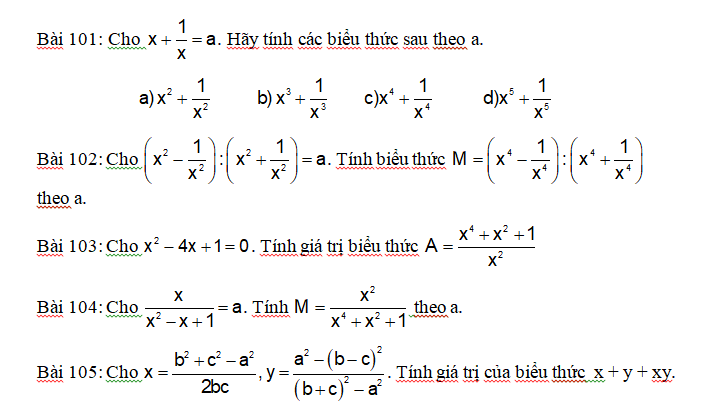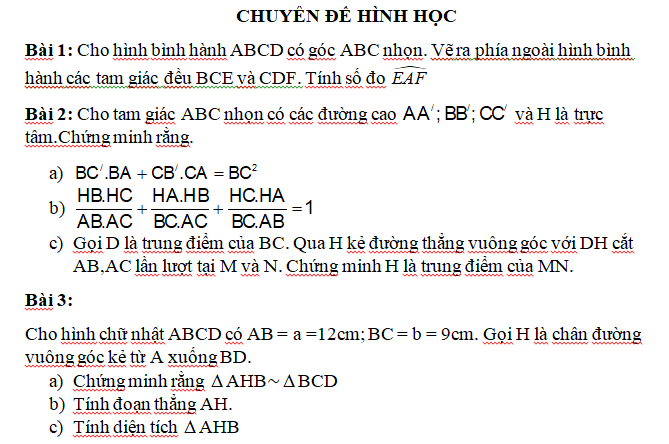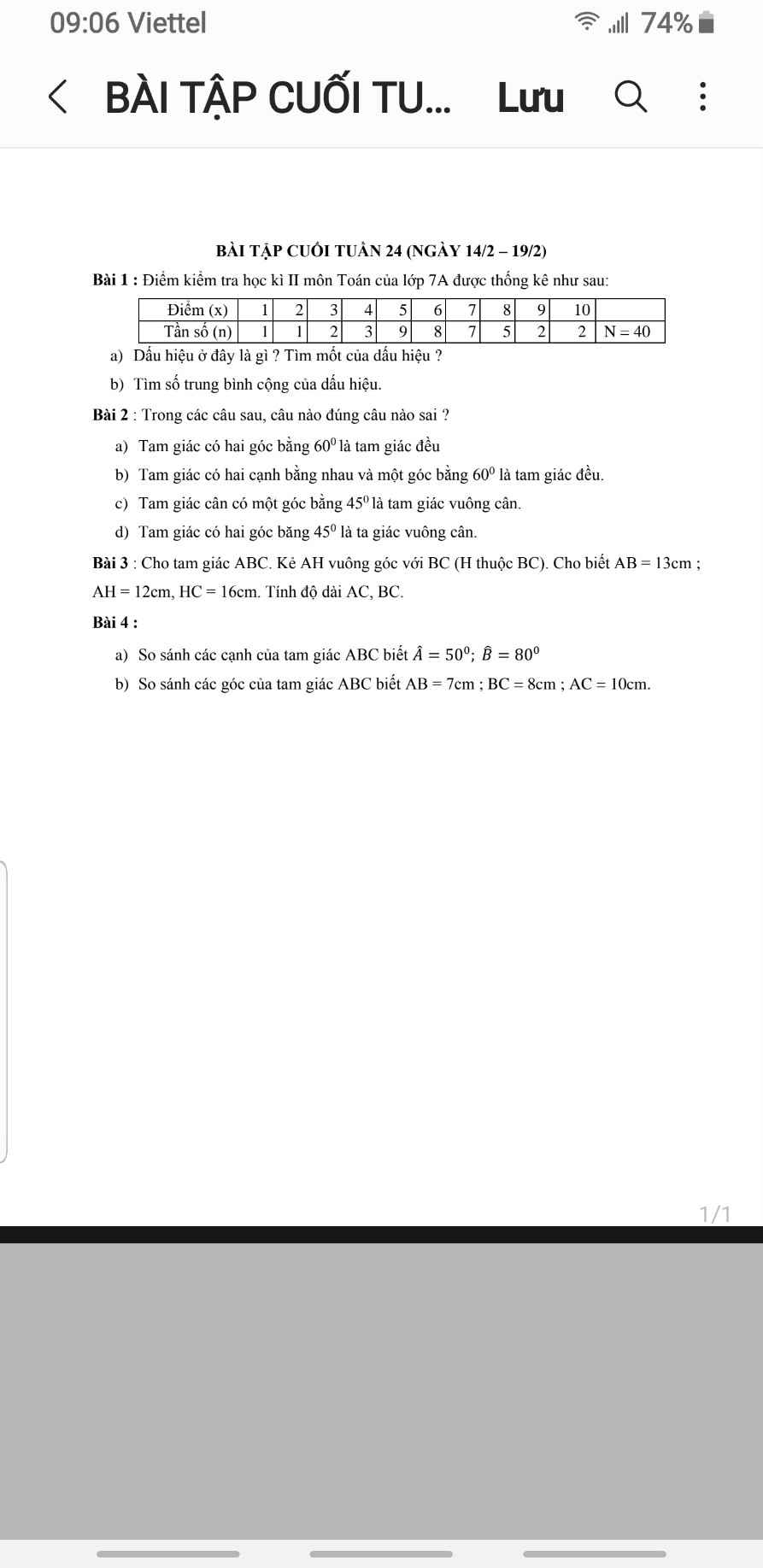Giúp em với please 😭 (mấy bài này e ko hiểu lắm mong mọi người giải dễ hiểu,chi tiết giúp e với)
Hãy nhập câu hỏi của bạn vào đây, nếu là tài khoản VIP, bạn sẽ được ưu tiên trả lời.


Bài 2: Chọn C
Bài 4:
a: \(\widehat{C}=180^0-80^0-50^0=50^0\)
Xét ΔABC có \(\widehat{A}=\widehat{C}< \widehat{B}\)
nên BC=AB<AC
b: Xét ΔABC có AB<BC<AC
nên \(\widehat{C}< \widehat{A}< \widehat{B}\)

ĐKXĐ: \(x\notin\left\{0;-9\right\}\)
Ta có: \(\dfrac{1}{x+9}-\dfrac{1}{x}=\dfrac{1}{5}+\dfrac{1}{4}\)
\(\Leftrightarrow\dfrac{20x}{20x\left(x+9\right)}-\dfrac{20\left(x+9\right)}{20x\left(x+9\right)}=\dfrac{4x\left(x+9\right)+5x\left(x+9\right)}{20x\left(x+9\right)}\)
Suy ra: \(4x^2+36x+5x^2+45x=20x-20x-180\)
\(\Leftrightarrow9x^2+81x+180=0\)
\(\Leftrightarrow x^2+9x+20=0\)
\(\Leftrightarrow x^2+4x+5x+20=0\)
\(\Leftrightarrow x\left(x+4\right)+5\left(x+4\right)=0\)
\(\Leftrightarrow\left(x+4\right)\left(x+5\right)=0\)
\(\Leftrightarrow\left[{}\begin{matrix}x+4=0\\x+5=0\end{matrix}\right.\Leftrightarrow\left[{}\begin{matrix}x=-4\left(nhận\right)\\x=-5\left(nhận\right)\end{matrix}\right.\)
Vậy: S={-4;-5}

Hướng làm:
Thấy cả tử mẫu cộng lại đều bằng 2021 → Cộng thêm 1 rồi quy đồng với mỗi phân thức
\(\dfrac{x+2}{2019}+1+\dfrac{x+3}{2018}+1=\dfrac{x+4}{2017}+1+\dfrac{x}{2021}+1\\ \Leftrightarrow\dfrac{x+2021}{2019}+\dfrac{x+2021}{2018}-\dfrac{x+2021}{2017}-\dfrac{x+2021}{2021}=0\\ \Leftrightarrow\left(x+2021\right)\left(\dfrac{1}{2019}+\dfrac{1}{2018}-\dfrac{1}{2017}-\dfrac{1}{2021}\right)=0\\ \Leftrightarrow x+2021=0\Leftrightarrow x=-2021\)
\(< =>\dfrac{x+2}{2019}+1+\dfrac{x+3}{2018}+1=\dfrac{x+4}{2017}+1+\dfrac{x}{2021}+1\)
\(< =>\dfrac{x+2+2019}{2019}+\dfrac{x+3+2018}{2018}=\dfrac{x+4+2017}{2017}+\dfrac{x+2021}{2021}\)
\(< =>\dfrac{x+2021}{2019}+\dfrac{x+2021}{2018}-\dfrac{x+2021}{2017}-\dfrac{x+2021}{2021}=0\)
\(< =>\left(x+2021\right)\left(\dfrac{1}{2019}+\dfrac{1}{2018}-\dfrac{1}{2017}-\dfrac{1}{2021}=\right)=0\)
\(< =>x+2021=0< =>x=-2021\)
Vậy....







- Gọi quãng đường AB là x (km)
vì thời gian là bằng quãng đường chia vận tốc, ta có:
- Thời gian của ô tô là \(\dfrac{x}{50}\) (km)
- Thời gian của xe máy là \(\dfrac{x}{40}\) (km)
vì ta dùng đơn vị là km/h nên ta phải đổi 30 phút qua giờ, ta có:
- Đổi: 30 phút = 0,5 giờ
vì thời gian đi của ô tô ít hơn xe máy là 0,5 giờ nên ta có phương trình:
\(\dfrac{x}{40}\) \(-\) \(\dfrac{x}{50}\) = 0,5
\(\Leftrightarrow\) \(\dfrac{x\times50}{40\times50}\)\(-\)\(\dfrac{x\times40}{50\times40}\) = \(\dfrac{0,5\times40\times50}{40\times50}\)
\(\Leftrightarrow\) \(\dfrac{50x}{40\times50}\)\(-\dfrac{40x}{50\times40}=\dfrac{1000}{50\times40}\)
\(\Rightarrow\) 50x - 40x = 1000
\(\Leftrightarrow\)10x = 1000
\(\Leftrightarrow\) x = 1000 : 10
\(\Leftrightarrow\) x = 100
vậy quãng đường AB là 100 (km)
----chúc cậu học tốt----
Đổi \(30phút=\dfrac{1}{2}h\)
Gọi quãng đường AB là \(x\left(km;x>0\right)\)
Thì thời gian ô tô đi từ A đến B là \(\dfrac{x}{50}\left(h\right)\)
Thời gian xe máy đi từ A đến B là \(\dfrac{x}{40}\left(h\right)\)
Vì thời gian đi từ A đến B của ô tô ít hơn của xe máy là \(\dfrac{1}{2}h\) nên ta có phương trình :
\(\dfrac{x}{40}-\dfrac{x}{50}=\dfrac{1}{2}\)
\(\Leftrightarrow5x-4x=100\)
\(\Leftrightarrow x=100\left(nhận\right)\)
Vậy quãng đường AB dài \(100km\)